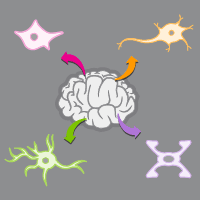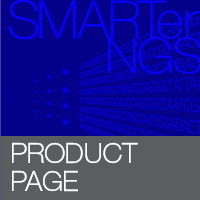Innovative research continuously pushes the boundaries of new technologies in a quest for compelling results, but it still requires the reagents, tools, and technical support to ensure success. In the world of single-cell and ultra-low input RNA-seq, Takara Bio provides you with the only SMART choice. With these tools, researchers can surpass the current limits of RNA-seq sensitivity.
This overview describes:
Why study single cells?
One of the most powerful ways to learn about cellular responses to stimuli is through studying genome-wide changes in transcription; however, a population of cells can conceal biologically relevant differences in the transcriptomes of individual cells. Many publications have shown that a single-cell or ultra-low input mRNA-seq approach can give new insights into diverse research areas such as tumor heterogeneity, cell lineage characterization, development, and the diversity of cells in a population.
What are the challenges of single-cell mRNA-seq?
Studying rare or precious samples—including stem cells, circulating tumor cells, and tissue biopsies—requires extraordinary sensitivity and reproducibility. Producing unbiased cDNA libraries for mRNA-seq is a particular challenge due to the limited number of RNA molecules available for reverse transcription in a single cell. A single cell may only contain 10 to 30 pg of RNA, depending on its size and metabolic state.
SMARTer Ultra low solutions for single-cell mRNA-seq
SMARTer Ultra low kits are exceptional tools for sequencing library preparation from single cells, a few cells, and ultra-low inputs of RNA. These kits rely on oligo(dT) priming and proprietary SMART (Switching Mechanism at 5' end of RNA Template) technology to ensure full-length, unbiased mRNA coverage. Intact cells can be used directly as the input for these kits, guaranteeing high-quality input RNA and full-length cDNA coverage.
- Ultra-low input: 1–1,000 cells, or 10 pg–10 ng high-quality (RIN >8) total RNA
- Versatile: cDNA is compatible with Illumina or Ion Torrent platforms
- Superior performance: A high number of genes identified, full-length transcript data, and minimal rRNA reads
- Well established: Click to see selected SMARTer citations »

cDNA libraries generated from single cells or a few cells with SMARTer Ultra low kits show remarkable reproducibility. Intact individual cells or 1,000 cells (HeLa or Jurkat; Panel A and Panel B, respectively) were used as input for the SMARTer Ultra Low Input RNA Kit for Sequencing - v3. The cDNA samples were analyzed on an Agilent 2100 Bioanalyzer. The single main peak indicates the purity and yield of the cDNA (the additional peak at ~1 kb in the HeLa cell samples is the contribution of a single highly expressed gene, FTH1).

Expression data produced using SMARTer Ultra low kits highly correlates with quantitative PCR (qPCR) data reported by the MicroArray Quality Control (MAQC) project. Scatter plots were used to compare differential expression data obtained using the SMARTer Ultra Low RNA Kit for Illumina Sequencing (from 1 ng total RNA) and qPCR data available for Universal Human Reference Total RNA (UHR) and Human Brain Reference RNA. The differential expression of ~700 genes showed a correlation value of 0.94, demonstrating that the sequencing results are consistent with previously reported expression data.
Go to the SMARTer Ultra low kits product page »
Differences between the generations of SMARTer Ultra low kits
We are driven to continuously improve our tools for superior single-cell mRNA-seq applications. With the latest, fourth-generation SMART-Seq v4 Ultra Low Input RNA Kit for Sequencing, we have built upon our experience with single-cell mRNA-seq and incorporated SMART-Seq2 innovations, including locked nucleic acid (LNA) technology, along with additional improvements in SMART technology. This kit delivers higher sensitivity, meaning more genes are identified; better reproducibility, especially for transcripts with FPKM <100; and lower background than either the SMART-Seq2 method or any previous SMARTer Ultra low kit. The combination of SMARTer technology and SMART-seq2 innovations is often loosely referred to as SMARTer-Seq chemistry.
Legacy SMARTer Ultra low kits are still available for full-length, unbiased transcriptome coverage.
- The SMARTer Ultra Low Input RNA Kit for Sequencing - v3 generated libraries with improved sequencing metrics, particularly for GC-rich sequences. This third-generation kit included many modifications from previous generations, including optimized primer and template-switching oligonucleotide concentrations, a different polymerase for library amplification (SeqAmp DNA Polymerase), and allowed for greater sequencing platform versatility.
- The SMARTer Ultra Low RNA Kit for Illumina Sequencing and SMARTer Ultra Low Input RNA for Illumina Sequencing - HV kit are the first- and second-generation kits, respectively. Both of these kits are based on the SMART-Seq method and use the Advantage 2 DNA polymerase. SMARTer Ultra Low Input RNA for Illumina Sequencing - HV kits differ from the first-generation kit by allowing for a larger input volume (9 µl rather than 1 µl).
Finally, the SMART-Seq v4 Ultra Low Input RNA Kit for the Fluidigm C1 System, IFCs provides an excellent solution for high-throughput mRNA-seq on the Fluidigm C1 platform. This kit is based on the fourth-generation SMART-Seq v4 Ultra Low Input RNA Kit for Sequencing.








